Code Names—and 2nd Chances—for NYC Pets!
Plus! RIP Minnie—and What to Do With Your Best Friend's Remains
Hello everyone,
Welcome to Issue #180 of CAFÉ ANNE!
Of all the details in last week’s story looking at Little Italy’s San Gennaro Feast, the interview with Michael Verra generated the most attention. Specifically, the fact that the 77-year-old still lives in the same apartment his grandparents rented after arriving from Naples in 1875. “My landlord don’t like it, but that’s his problem!” Verra said.
This lead to a flurry of comments speculating about Mr. Verra’s rent control situation, and reader Justin D. tracking down a 2016 video tour of Mr. Verra’s apartment. The rent? $87 a month.
In other news, several tech wizards responded to my request for help using the Yelp and Google Places APIs to scrape and sort location ratings data. The CAFÉ ANNE “Worst of NYC” app may actually happen. Stay tuned!
I am very excited for this week’s issue, of course. It includes an account of the NYC ASPCA’s witness protection program for pets, a tribute to my dear Minnie, who passed away last Monday, and valuable info on what to do with a dead dog’s body in NYC. Please enjoy.
Regards!
Anne
TWEET OF THE WEEK
DEPT. OF ANIMAL WELFARE
Code Names—and 2nd Chances—For NYC Pets!
Do you remember earlier this year I offered a match-making service for CAFÉ ANNE readers? I was delighted when the algorithm introduced me to Maria Skorobogatov, a fellow Brooklynite who grew up on the Lower East Side. When we met for lunch at the diner, I learned she’s had a very cool animal career which included working as a zookeeper in Houston, a dog bodyguard in Hanoi (which has a big pet-napping problem!) and, of course, walking dogs for rich people in NYC. And these days? She’s a caseworker for dogs who have been hauled into the ASPCA by the cops. “They’re criminals!” She joked.
Turns out the ASPCA has a whole program—unique to NYC—devoted entirely to helping pets with legal issues. These are dogs and cats embroiled in cases of abandonment, neglect or abuse.
The program employs a 50-person team of lawyers, forensic scientists, caregivers and behavior specialists like Ms. Skorobogatov—all housed at the ASPCA’s Animal Recovery Center on East 92nd Street. Last week, I got a tour of the center, which houses up to 80 pets, and discovered a little-known world of spray cheese, pet detectives and canine character rehab.
My tour guide was Animal Recovery Center Director Erica Barbot, a fast-talking Bronx native who’s been with the ASPCA for 16 years. We started with a little history lesson. Until 2014, she said, the ASPCA was single-handedly responsible for enforcing NYC’s animal cruelty laws. The nonprofit employed less than a dozen humane officers to protect the city’s estimated one million dogs and cats. The squad couldn’t keep up with all the animal cruelty reports flooding in. “Many animals, I’m sure, fell through the cracks,” said Ms. Barbot.
Eleven years ago, the ASPCA launched a first-of-its kind partnership with the NYPD, transferring law enforcement responsibilities to the Police Department’s 33,000 officers. Retired city cops and others now train active officers to recognize and respond to animal cruelty. This led to a 300% increase in cases. Not because abuse is rising, Ms. Barbot said, “but because we have more trained eyes able to recognize it.”
How do cops feel about handling pet cases? Turns out police officers sometimes wind up adopting the animals they rescue. “They just fall in love with them,” said Ms. Skorobogatov, who joined us on our tour. “Usually, they’re the first ones we call if the dog goes up for adoption.”
First stop: the exam room. Every year, about 550 pets come through the center. Many are found abandoned in parks, vacant apartments or tied to a fence on the street. Others are discovered in hoarding situations—neglected by owners trying to care for way too many animals. The record? 90 dogs and cats found in a single NYC home.
A smaller number are turned in by city veterinarians who are legally required to report suspected abuse or neglect. “And sometimes the NYPD will be responding to a completely unrelated case—like a drug or gun case—and they’ll find a bunch of dogs in the apartment who are being neglected,” said Ms. Skorobogatov. They’ve even taken in animals from dog-fighting busts.
[I later went down a little rabbit hole researching animal cruelty laws and was fascinated to learn it’s illegal to abandon your pooch, give him a tattoo, or give him away as a prize. And according to NYS Agriculture and Markets Law §362, it’s also against the law to “throw substances injurious to animals, such as glass, nails or pieces of metal, in public places.” Folks convicted of animal cruelty, meanwhile, must register with the state’s Animal Abuse Registry of persons “prohibited from owning, possessing, residing with, having custody of, or intentionally engaging in any physical contact with any animal.”]
During the intake session, the pet is examined by a vet along with a behavior specialist like Ms. Skorobogatov and a forensic scientist who will gather the evidence—including photos—needed to establish a criminal case.
The pet is typically extremely freaked out, of course, so the team follows “fear-free practices.” A favorite tool: spray cheese for distraction purposes. “We love a cheese wall, a peanut butter wall,” said Ms. Barbot.
Which treats work best? Over the years, the center has developed a snack ranking hierarchy based on overall appeal. Hot dogs rank at the top.
Next stop, the kennel area, where pets are housed and fed. It’s oddly sleek—all stainless steel, concrete floors and frosted glass, like an Apple store. Which is nice because a pet may live at the center for months while its case wends its way through court.
Ms. Barbot showed me the cat condos, where kitties are housed in strategically mixed groups so that social, people-friendly felines can teach good manners to the more feral inmates.
I couldn’t help noting the pet names posted on one of the cat rooms: Cumulus, Dew and Nimbus. “Oh yes, those are the Atmosphere Cats!” said Ms. Barbot.
Turns out, when a pet arrives at the shelter, the ASPCA gives it a new name—sort of like a person entering a witness protection program—since many of them were seized and are considered evidence in active criminal investigations.
To keep things organized, when more than one animal is rescued from the same home, they all get names based on single theme. “Then we can ask, for example, ‘Is there a legal update on the Atmosphere Cats, or the Fish Dogs, or the Cheese Cats?’” said Ms. Barbot.
On to the small dog ward! The center sees lots of little dogs that were never groomed by their owners. Their fur can get so badly matted, it cuts circulation to their limbs, requiring amputation. Sometimes the owners simply don’t know any better, said Ms. Barbot. In those situations, the case may not be pursued criminally. Instead, the ASPCA will treat the pet, return it to the owner and follow up with its Community Engagement Team, which assists animals and their owners at home. “They’ll give them scissors, clippers and do an at-home training so that they can groom their animal themselves,” said Ms. Barbot.
As we walked the floor, I wasn’t allowed to pet any of the creatures. Signs on the wall warned, “You may not take photos of these animals. They are all involved in legal cases.”
But when the tour concluded at the center’s outdoor terrace, I got to meet two guests including Sadie, a friendly Spaniel mix with a sweet puppy face. She was found at the end of August—in an East Harlem dumpster!
So far, there are no suspects, but the NYPD’s Animal Cruelty Investigation Squad—the city’s dog detective unit—is on the case. Typically, detectives will canvas the neighborhood with photos of the pet, questioning residents and viewing security footage to see if they can track down the owner, said Ms. Barbot.
If a suspect is found, the ASPCA will work with the district attorney’s office to prosecute the case—each of the five boroughs has assistant DAs dedicated to animal cruelty cases.
When Sadie first arrived at the center, she didn’t like being handled, said Ms. Skorobogatov, but she’s come a long way. Like every guest, she got a personalized daily training plan to get her ready for adoption. And she’s been an excellent student! Sadie wiggled and gave me a big kiss on the nose before turning to Ms. Skorobogatov for a sardine.
“What I like is a dog who starts off being pretty freaked out, and then slowly starting to see the personality come out as they get more acclimated to the environment—as they start to trust us more and get used to the routine of the shelter life,” said Ms.Skorobogatov, who is typically handling ten cases at a time. “I love seeing them thrive and shine, and we get to know who they really are.”
Next I met Zara, a sand-colored mutt discovered on a Brooklyn rooftop with skull fractures. She’s recovering nicely after a stint in the hospital. She doesn’t like to be picked up, but she’s learning to tolerate being toted around in a Fresh Direct bag. She also serves as Ms. Bobot’s current “office dog,” hanging out desk-side rather than in a kennel—an unofficial honor reserved for the best-behaved guests.
Not surprisingly, ASPCA staffers sometimes wind up adopting the inmates. Ms. Barbot fell for Princess, a small pit bull who ate a collar. “It’s a little bit chicken-and-egg,” said Ms. Barbot. “Was she emaciated because she wasn’t being fed, and then ate a collar? Or did she eat a collar because she was a naughty girl, and then her owners didn’t have the resources to get her care?”
While most pets who come to the center eventually find a home, about 25% are euthanized—they’re too far gone, mentally or physically—to be adopted.
Staffers prefer to focus on favorite stories, including that of the legendary Theo, a tiny Yorkie who swallowed a bunch of magnets. He could only eat when perched upright.
The center bought him a special padded seat called a Bailey chair—sort of like a baby’s high chair equipped with a little tray—and trained him to eat in the seat. (His meals consisted of yogurt melts, the only food he can tolerate).
He was soon adopted by a family in Manhattan, which also adopted the chair. Ms. Barbot says both Theo and his owners are thriving. If only every human got such care!
Want to support the NYC ASPCA? You can donate, foster or volunteer.
EUGLOGY
RIP MINNIE!
2010-2025
If you will indulge me, dear reader, this issue is dedicated to my wonderful dog, Minerva “Minnie” Kadet, who died last Monday night. She had a most excellent life! I adopted her in 2011 when she was a year old, and she was nearly always by my side—meditating with me on the couch, snoozing under my desk while I wrote, doing errands. We had so much fun running around Brooklyn, hanging out on the Promenade, drinking coffee and playing speed chess.
Minnie was an intelligent, light-hearted and amusing lady who offered everyone a friendly greeting. One of my neighbors once told her, “Minnie, you’re the only person who loves me.” He may have been right!
A Border Collie-Papillon mix, Minnie had patches AND spots AND freckles AND polka-dots. Her only shortcoming was getting overly excited about treats, but the same could be said of her mistress.
Her best friend was Peewee, a Chihuahua mix who also died recently, after retiring in Florida.
Minnie died at home after a very brief illness, drifting off while I recounted stories about our adventures together. We should all live so long, and die so well. I have nothing but gratitude for our time together.
The Aftermath
The morning after Minnie died, I realized I had no idea what to do with her body. A quick Google search, however, turned up a NYC 311 information page with the delightfully straightforward title, “Dead Animal on Private Property.”
Turns out, it’s totally legal to bury your pet in your backyard. But how many folks in New York have that luxury? I don’t even have a fire escape.
Another option, also from the 311 page:
You can put dead animal remains out with your regular trash for pick up by the Department of Sanitation (DSNY).
If you choose to put the dead animal out for collection, place it in a heavy-duty black plastic bag or double plastic bag. You must tape a note to the bag stating its contents (for example, “dead dog” or “dead cat”).
That did not strike me as the most respectful way to take care of Minnie.
I found a third option. You can take the body to one of NYC’s Animal Care Centers (aka the city pound). They will cremate the remains for a $50 fee. That sounded better, but schlepping Minnie’s body all the way up to 110th Street on the 6 train felt like too much of an adventure, even for me.
Finally, I got ahold of my vet and learned they offer cremation services. As soon as the office opened, I covered Minnie with a blanket and carried her six blocks through Brooklyn Heights, navigating the mobs of parents and children on their way to school. Minnie’s body was now extremely stiff, and her little legs were poking out. Even so, no one seemed to notice I was carrying a dead dog. That’s NYC for you!
The vet offered two options: A private cremation for $350 (which included the return of Minnie’s ashes) or a $250 group cremation. I was fine with the cheaper group cremation until I learned that the ashes would be buried in Long Island. Long Island!?!? If she were not already dead, Minnie would die of embarrassment. I opted for the private cremation. When I receive the ashes later this week, I will stow them on the bookcase next to the ashes of her predecessor, the late, great Louis Hiegel.
Meanwhile, I had a couple more questions: How many dead pets does the Animal Care Center receive for cremation, and what do they do with the ashes? A spokeswoman for the agency told me in an email that last year, it “received 1,819 DOA animals,” and “the Department of Sanitation takes care of transport.”
“I think it’s important to note that though we offer these low-cost services, we can only offer communal cremation, handled with care through licensed facilities. That is to say we are unable to return ashes,” the spokeswoman added. “We do, however, provide sympathy cards and paw prints.”
CAFÉ ANNE is a free weekly newsletter created by Brooklyn journalist Anne Kadet. Subscribe to get the latest issue every Monday.







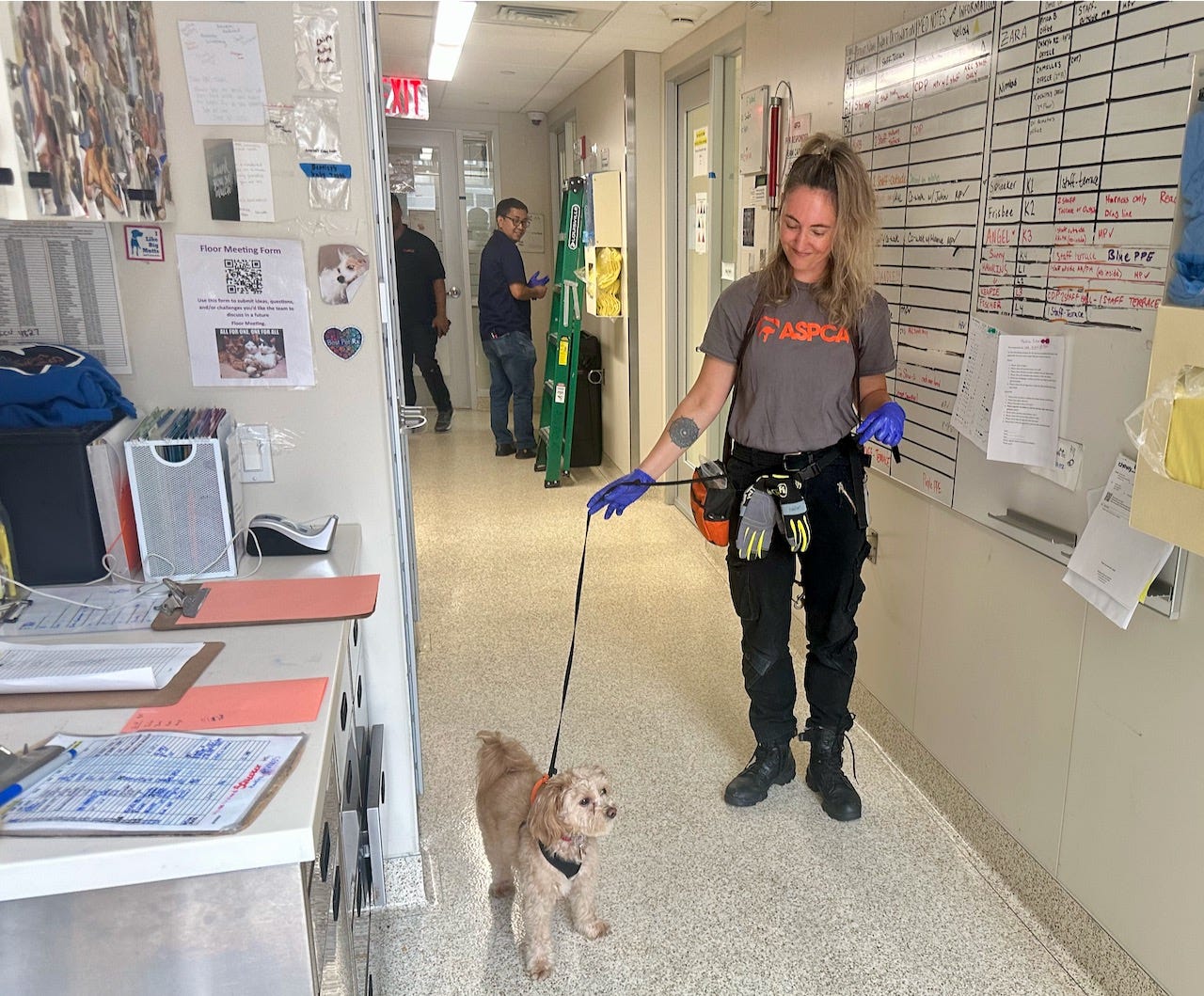

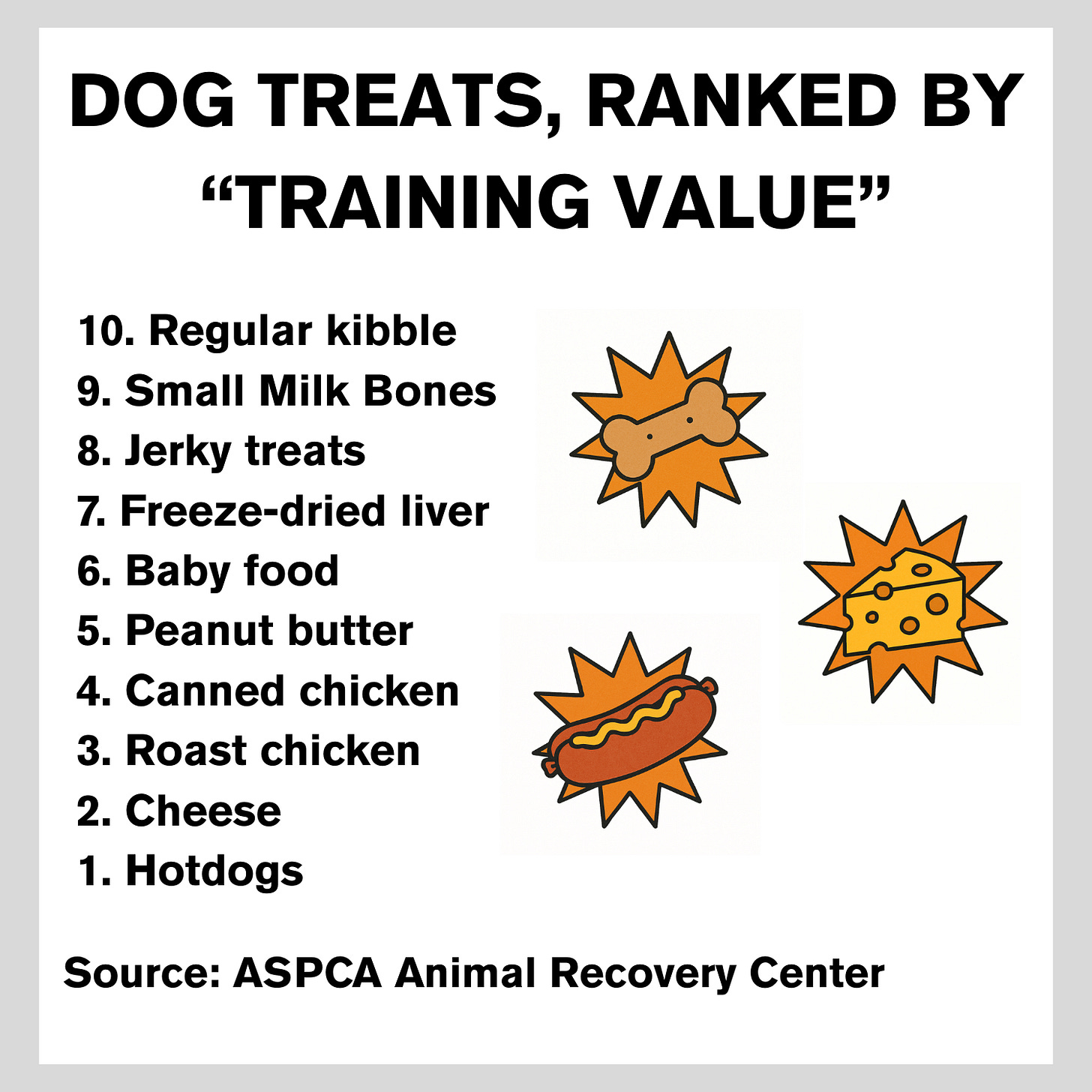
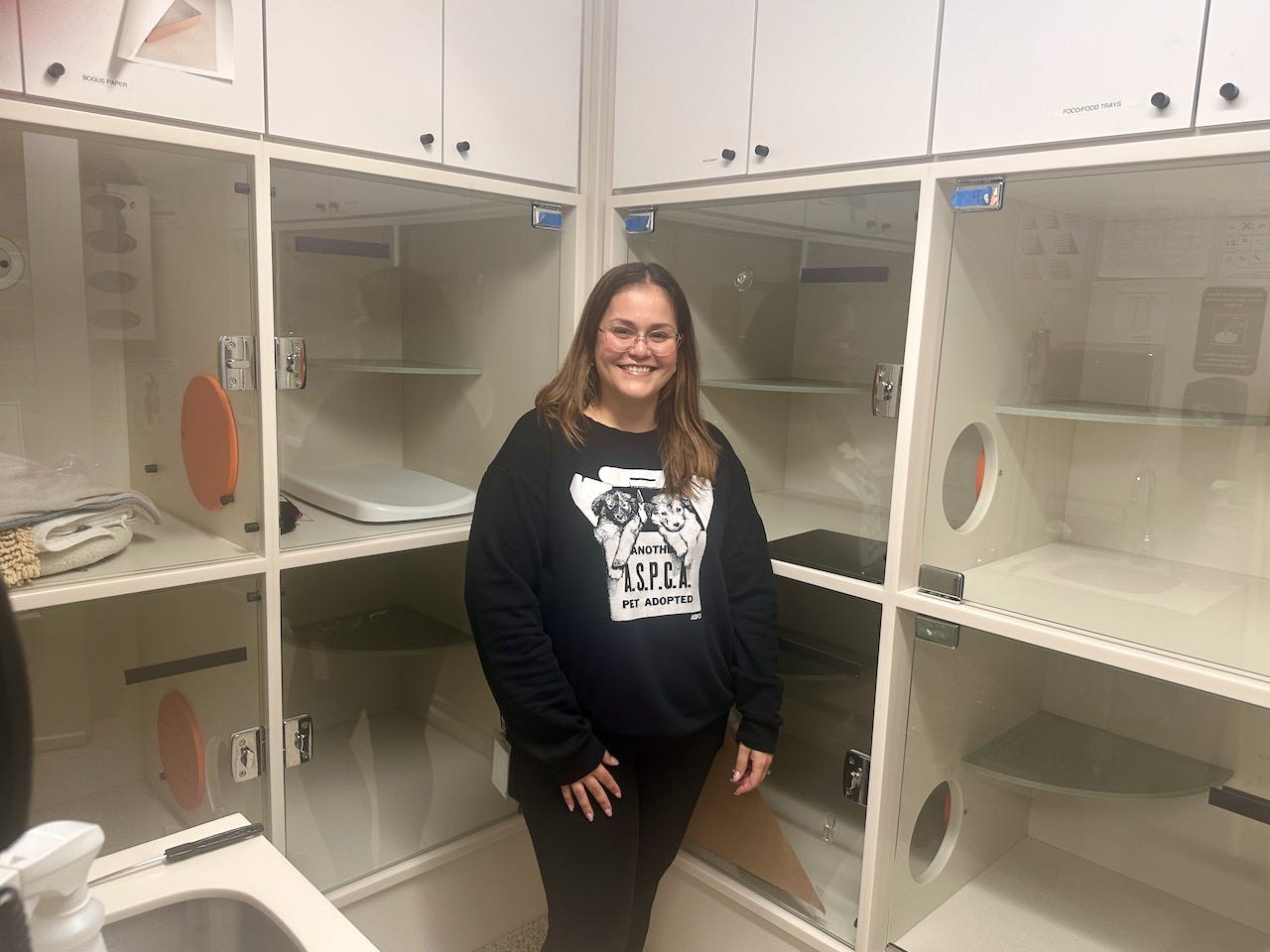

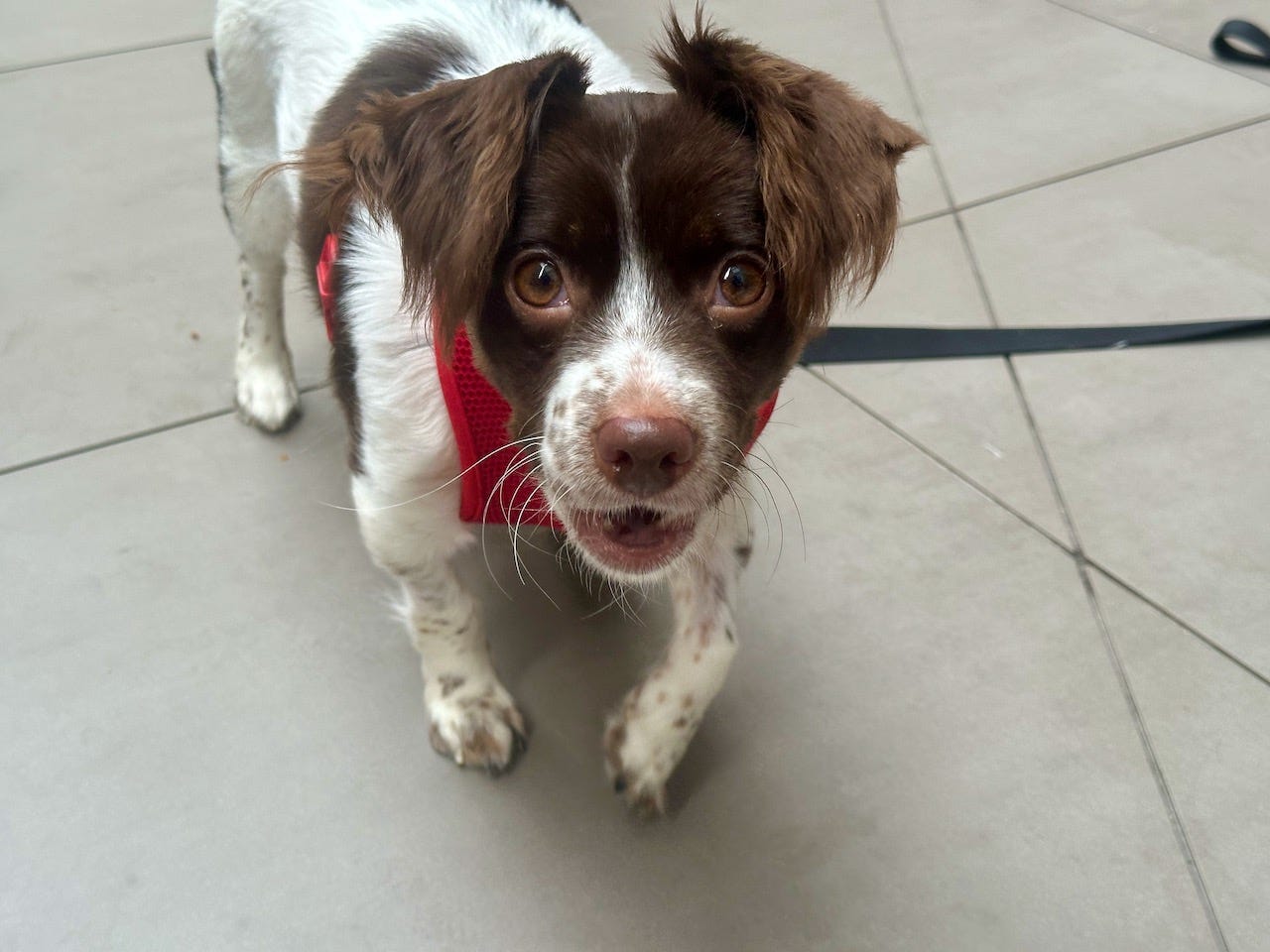
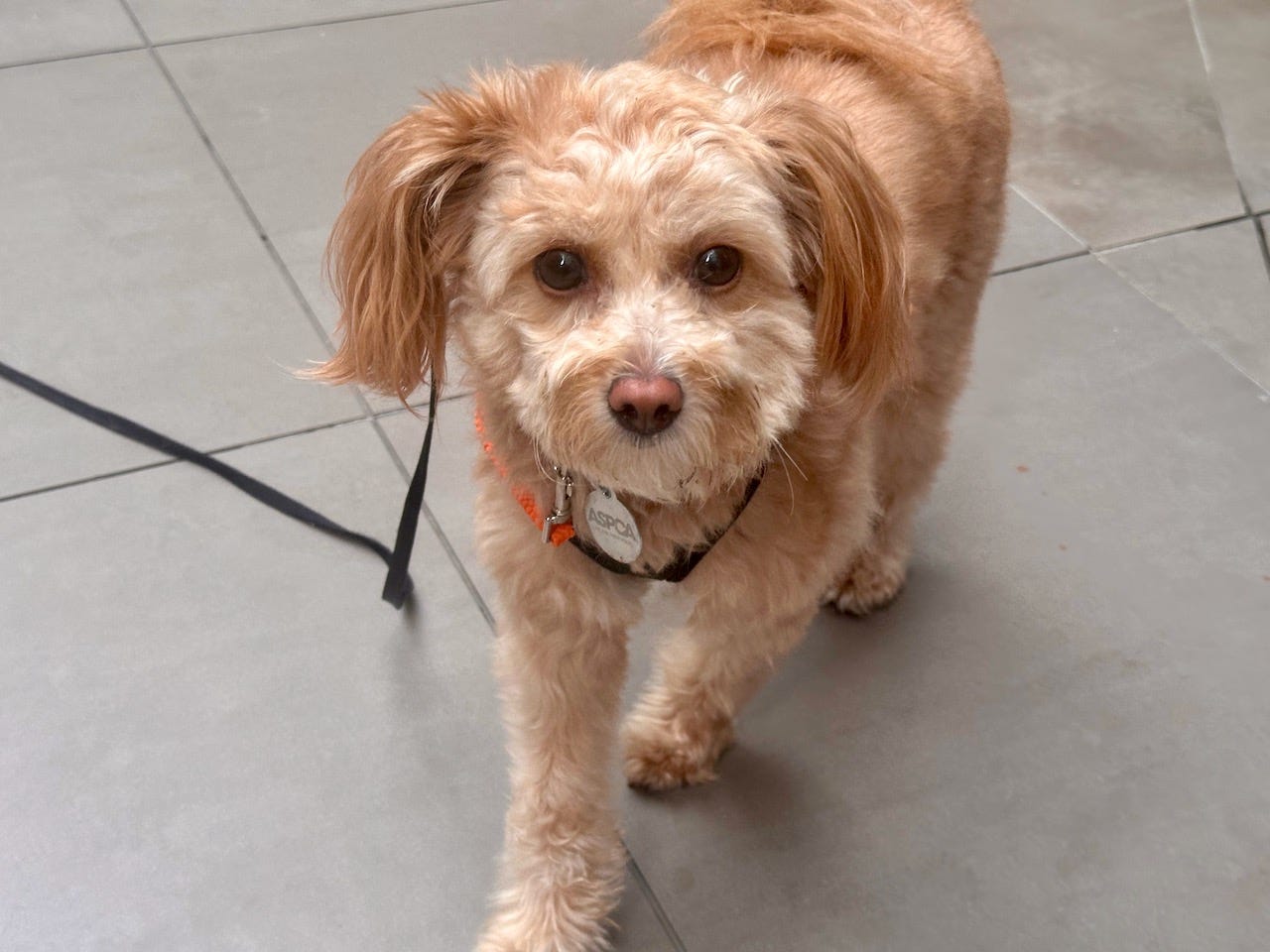
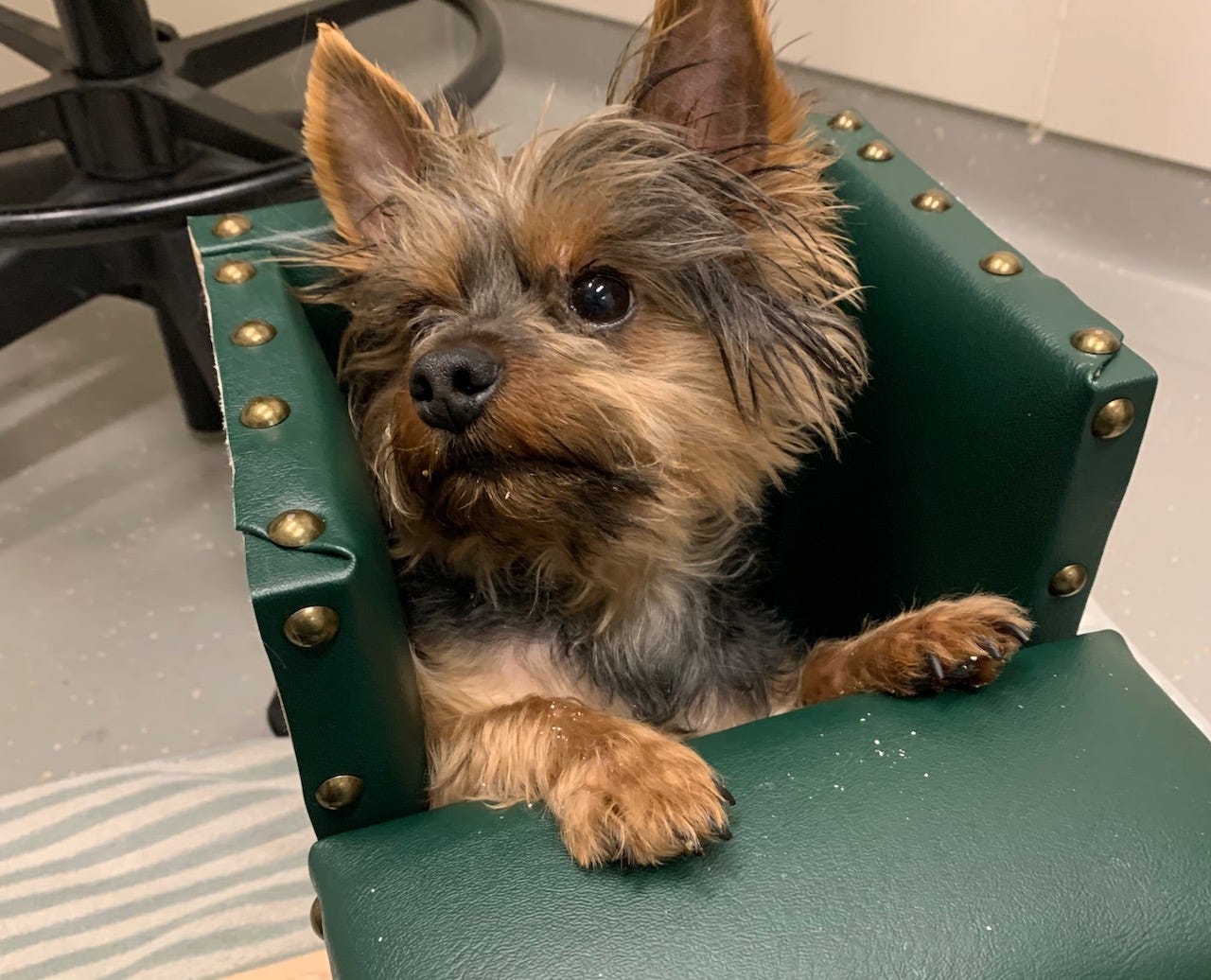


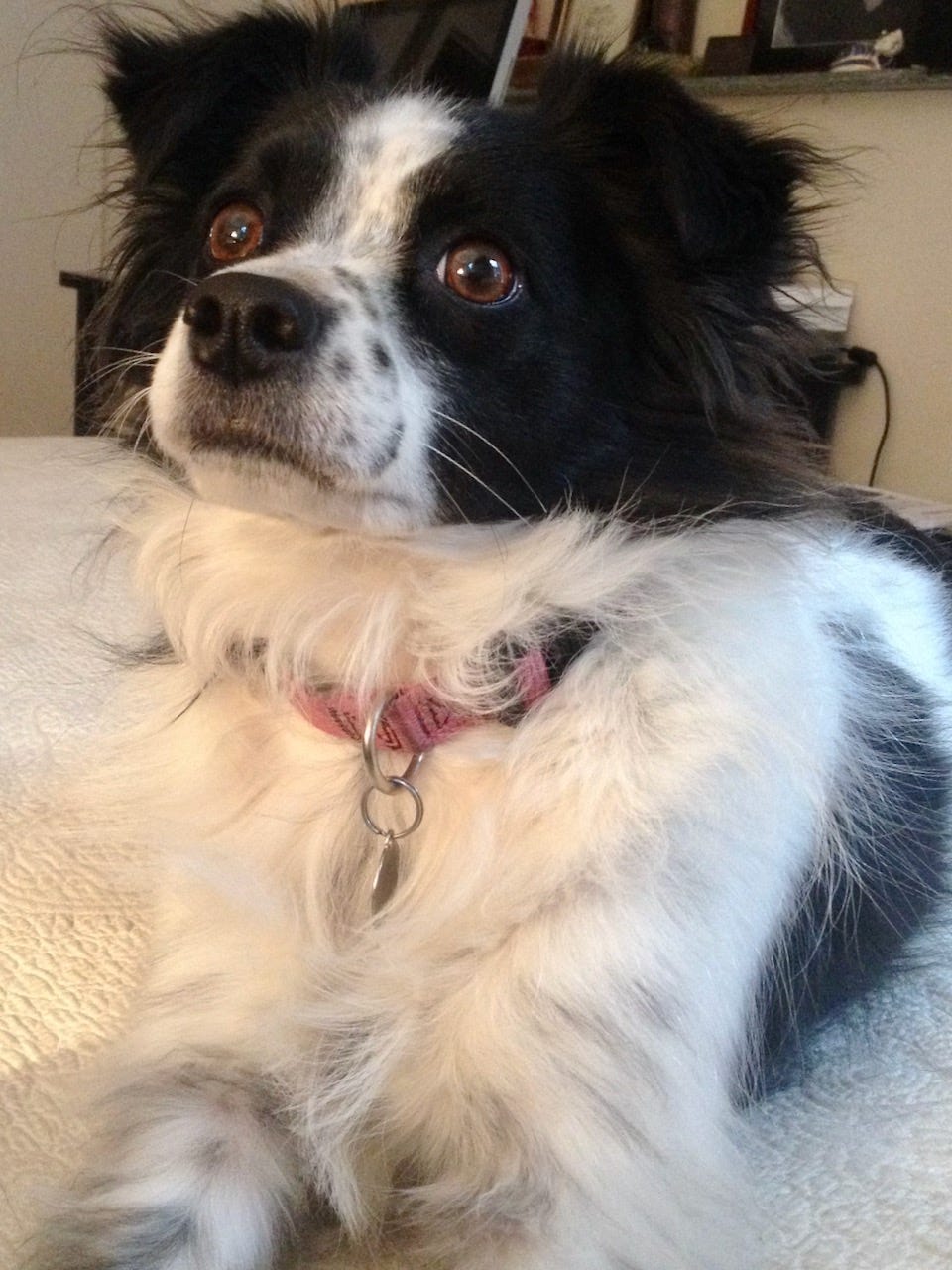



Anne, thank you for your lovely eulogies of Peewee and Minnie. That picture of the two of them being pupdogs is a treasure, and I hope it brings you comfort and solace as you grieve for Minnie. I also hope she haunts you in the kindest possible way. I was very attached to our first cat as a married couple, a wonderful seal point Siamese named Hengist. (yes, he had a sister named Horsa, a chocolate point Siamese who lived to be 24.) He haunted us in the nicest possible way -- I would hear his little claws clacking on our tile floor from time to time.
And thank you also for using your peerless platform to advocate for more sensible animal protection laws! I wonder if some fine and sensible political candidate could get elected on such a platform?
I would so love it if this project got to expand outside of NYC to the rest of America and Canada. Current laws and protocols for dealing with animals elsewhere are largely dated and inadequate, while this approach is far more humane and progressive-minded.